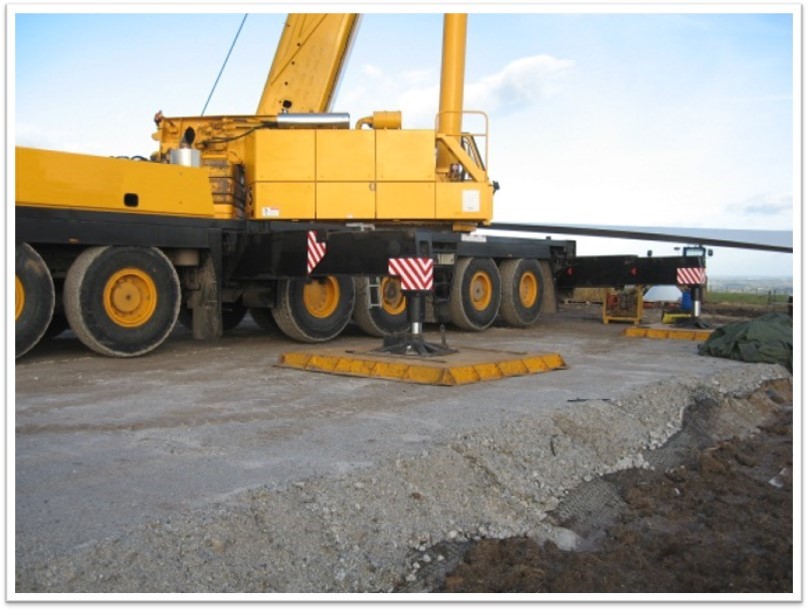
Temporary granular platforms for construction plant (including haul roads, working platforms and general hard standings) are a necessary feature of almost all construction sites but the need to ensure that they are adequate for the intended use is often overlooked. Inadequate design would most likely lead to significant incidents of overturning plant that would result in, at best, cost and delay or, at worst, injury and/or death. A major cause of plant instability is a poor site surface or working platform. This may be due to a lack of design, poor quality installation, or a lack of maintenance or inspection. Given the consequences of a rig falling over, most would agree that each of these aspects should be carried out thoroughly and by competent people.
While current methods for the technical design of granular working platforms have proved generally reliable, it is recognised that there is a lack of consistency on how and when they are applied, resulting in varying degrees of economy (and possibly un-economic design in certain instances). In addition, the introduction of the ‘Eurocodes’ (although not entirely applicable) has brought about an increased expectation that temporary structures should be designed in line with current national standards.
In 2019, ‘a Guide to good practice’ document was published by the Temporary Works forum (TWf), that summarises all existing rigorous and empirical design methods and good practices available in UK industry. The Guide is not intended to replace current guidance, but it is hoped that it will supplement current guidance and provide an overall approach that addresses the aforementioned issues.
This guide is, therefore, aimed at:
- providing recommendations for the overall design of working platforms;
- improving the application of current structural design methods;
- suggesting a suitable method for the application of Eurocodes;
- considering ways of achieving greater economy while maintaining a suitable level of reliability with regard to the particular risks under consideration;
- providing an introduction to related health and safety and sustainability issues
The guidance offered is intended primarily for temporary works designers, in particular less experienced engineers. It is also, however, intended to act as an aid to others involved in the procurement and use of granular working platforms.
The link to the TWf Guide is below:
https://www.twforum.org.uk/viewdocument/working-platforms-design-of-granu
Another useful document that summarises good practice and guidance from around Europe and beyond, is the ‘Guide to Working Platforms’ that was published by the European Federation of Foundation Contractors (EFFC) in January 2020 and the link is below:
EFFC-DFI_Guide_For_Working_Platforms_Edition_1_LowRes-1.pdf
Article provided by Chaido Doulala-Rigby, member of the Association of Geotechnical and Geoenvironmental Specialists (AGS), Geotechnical Working Group.